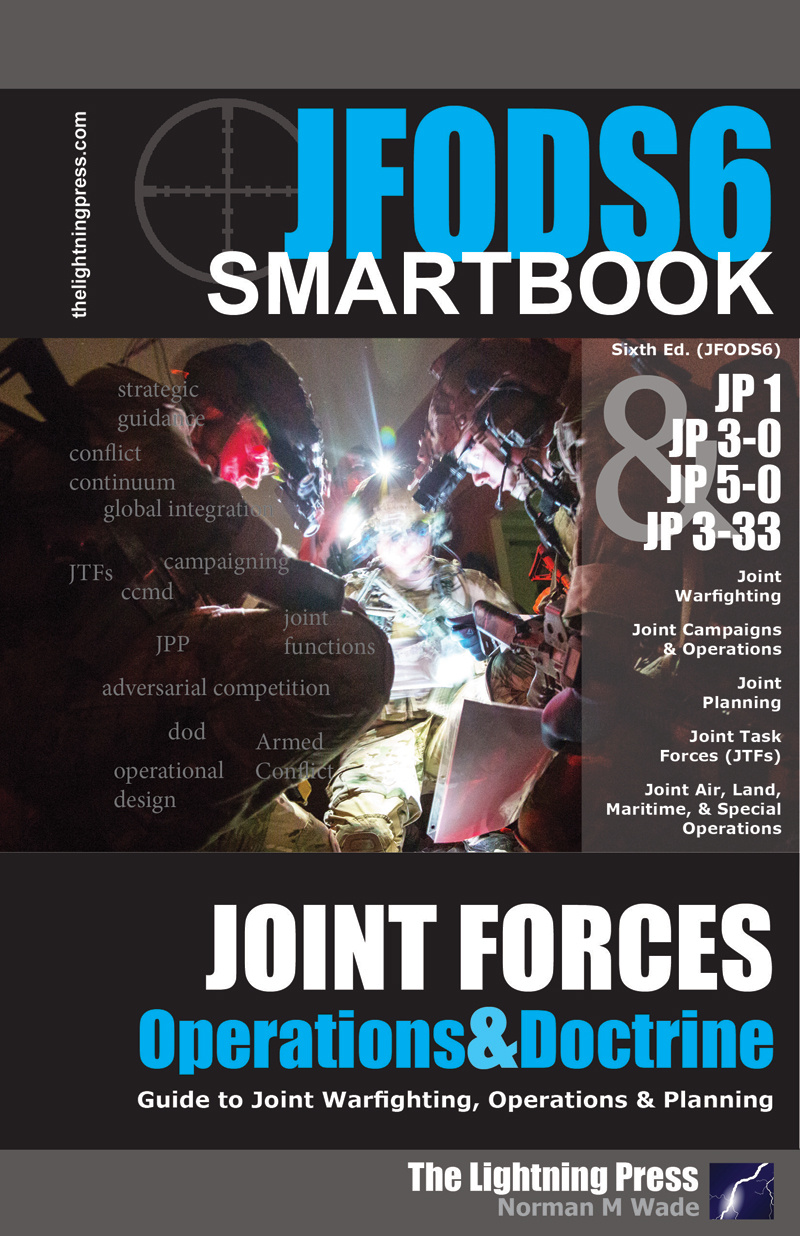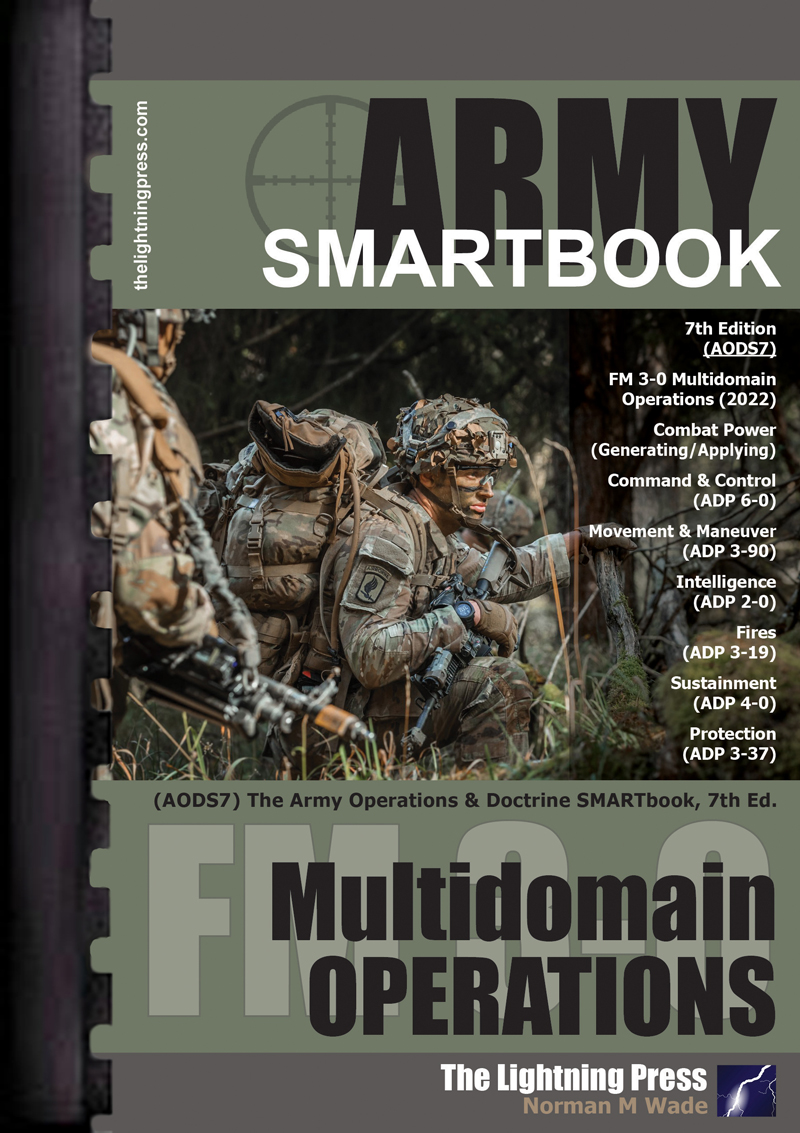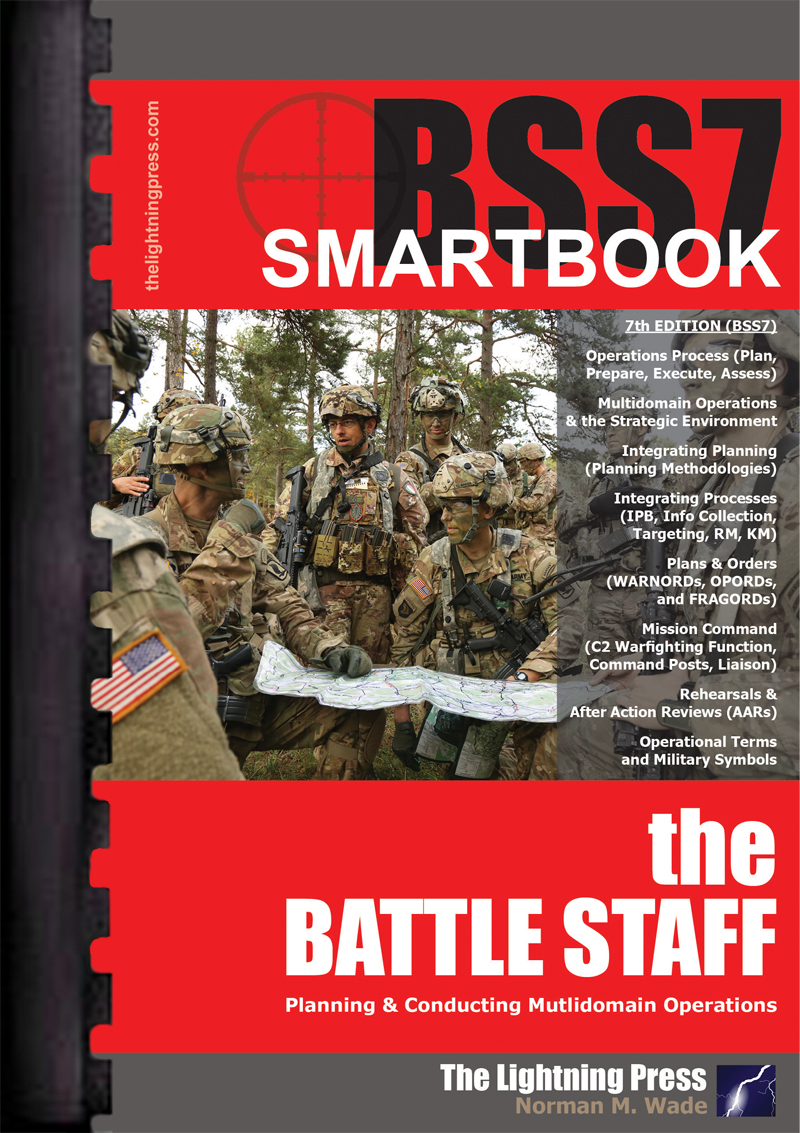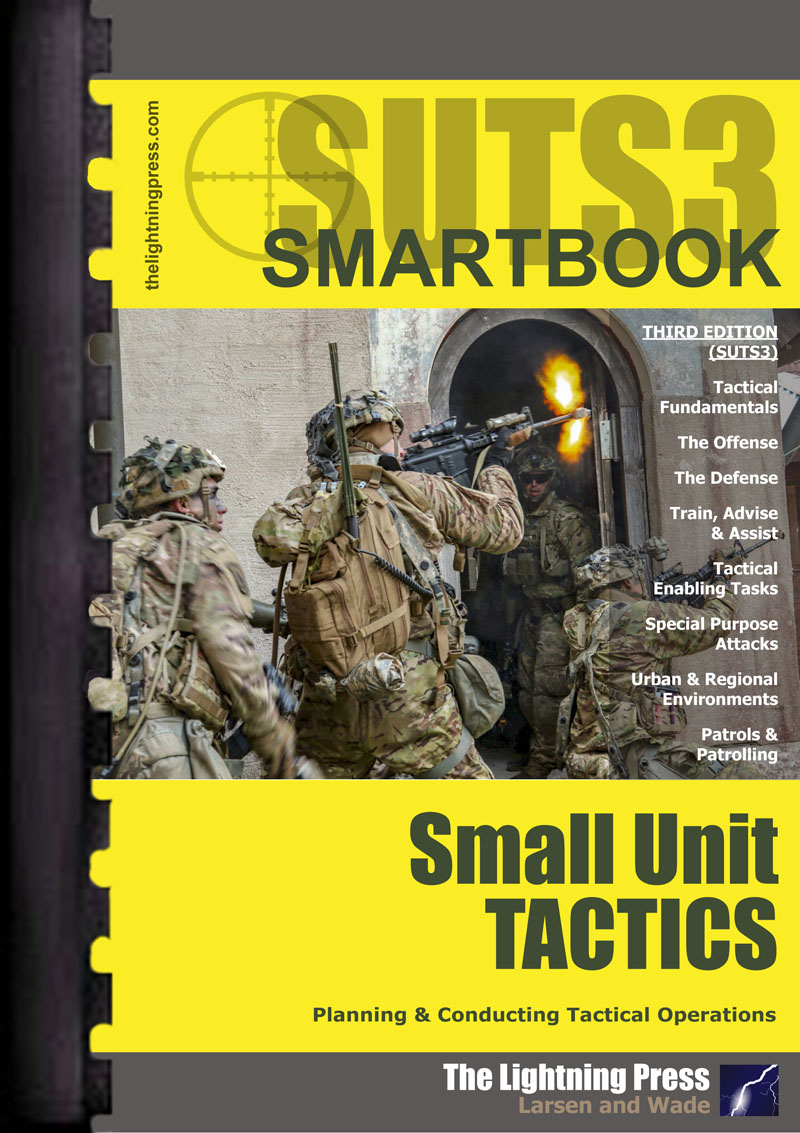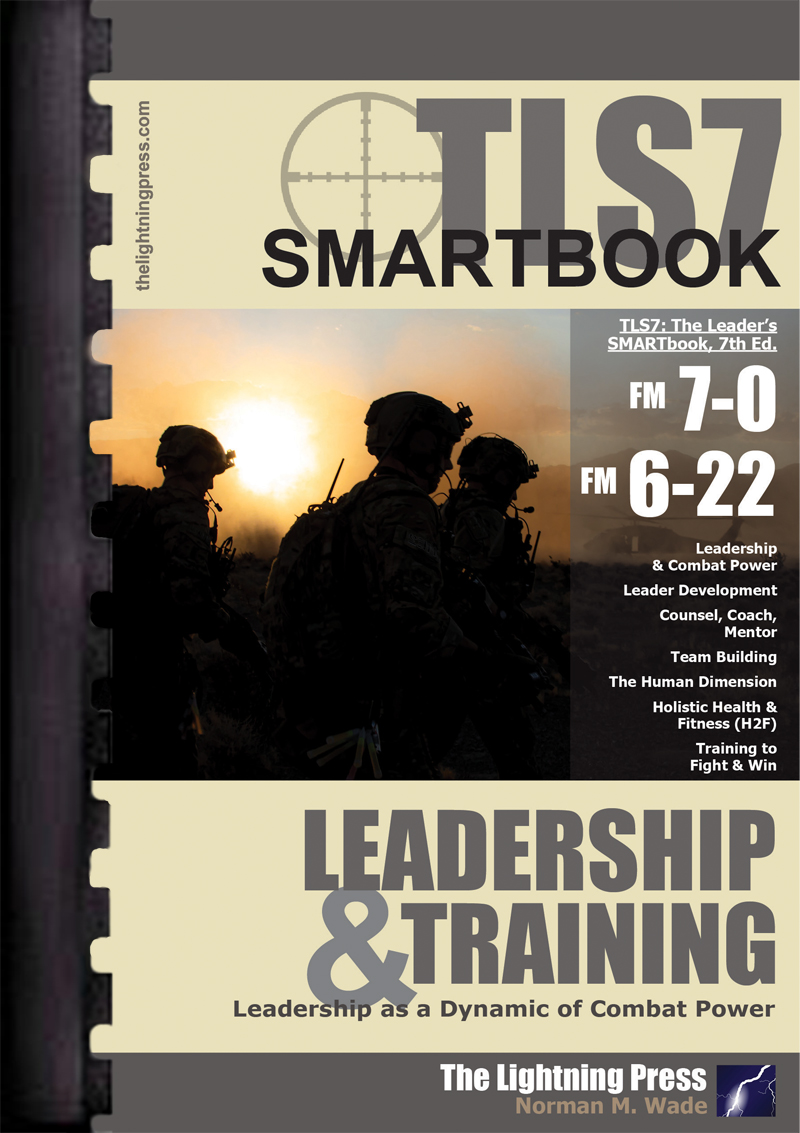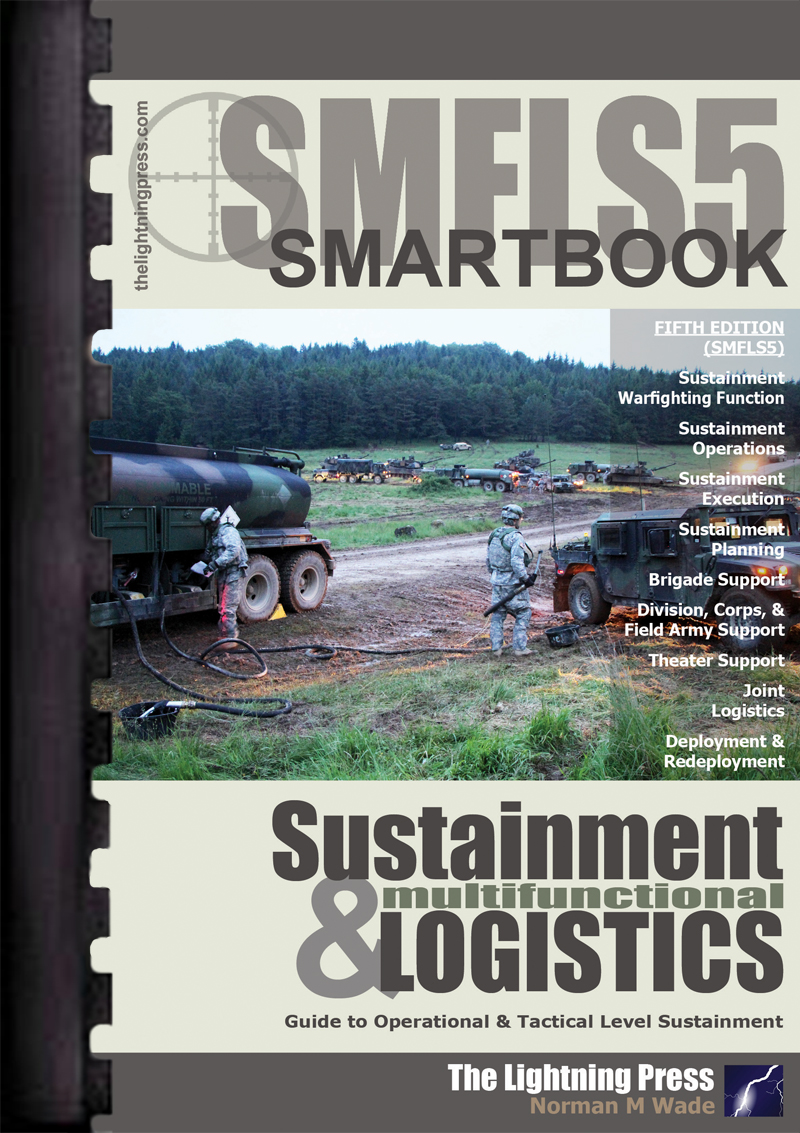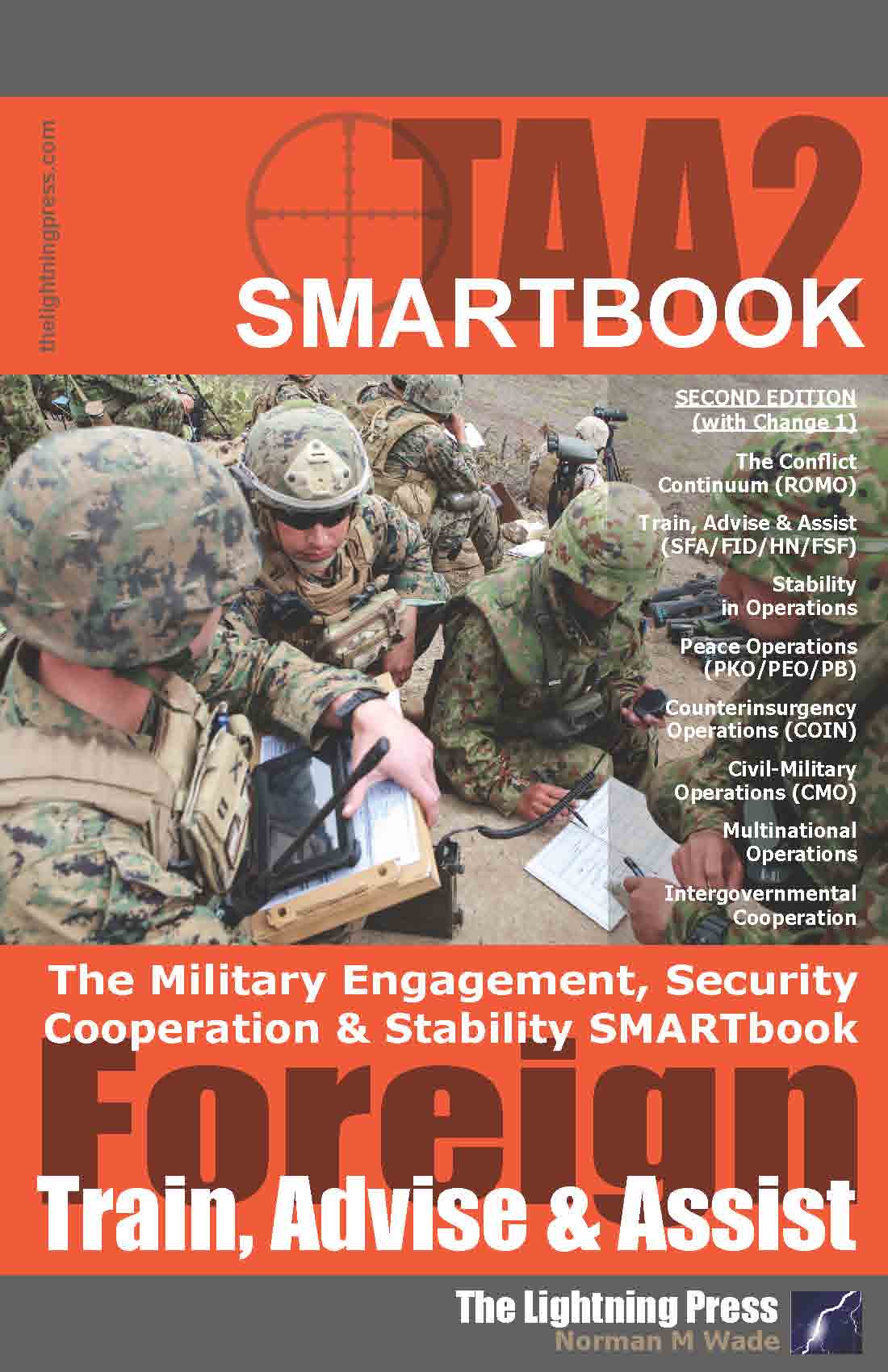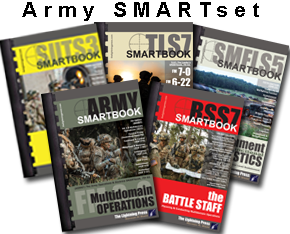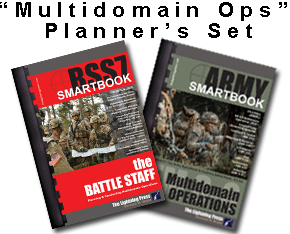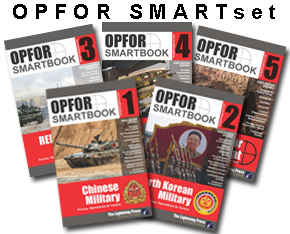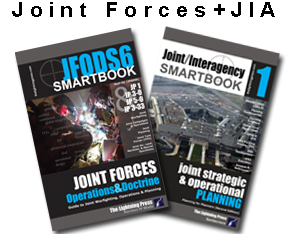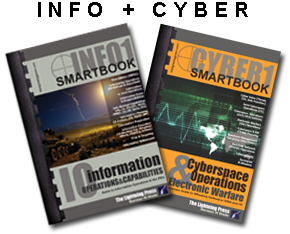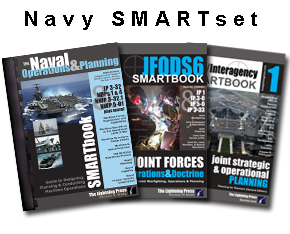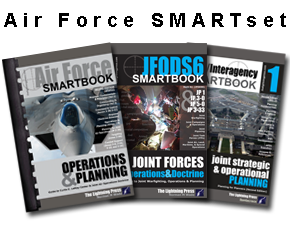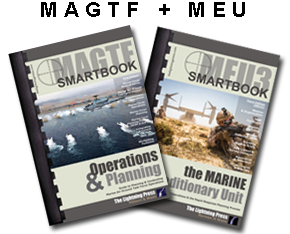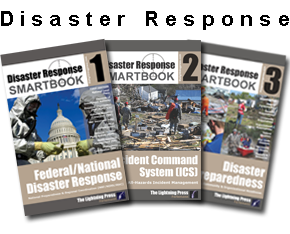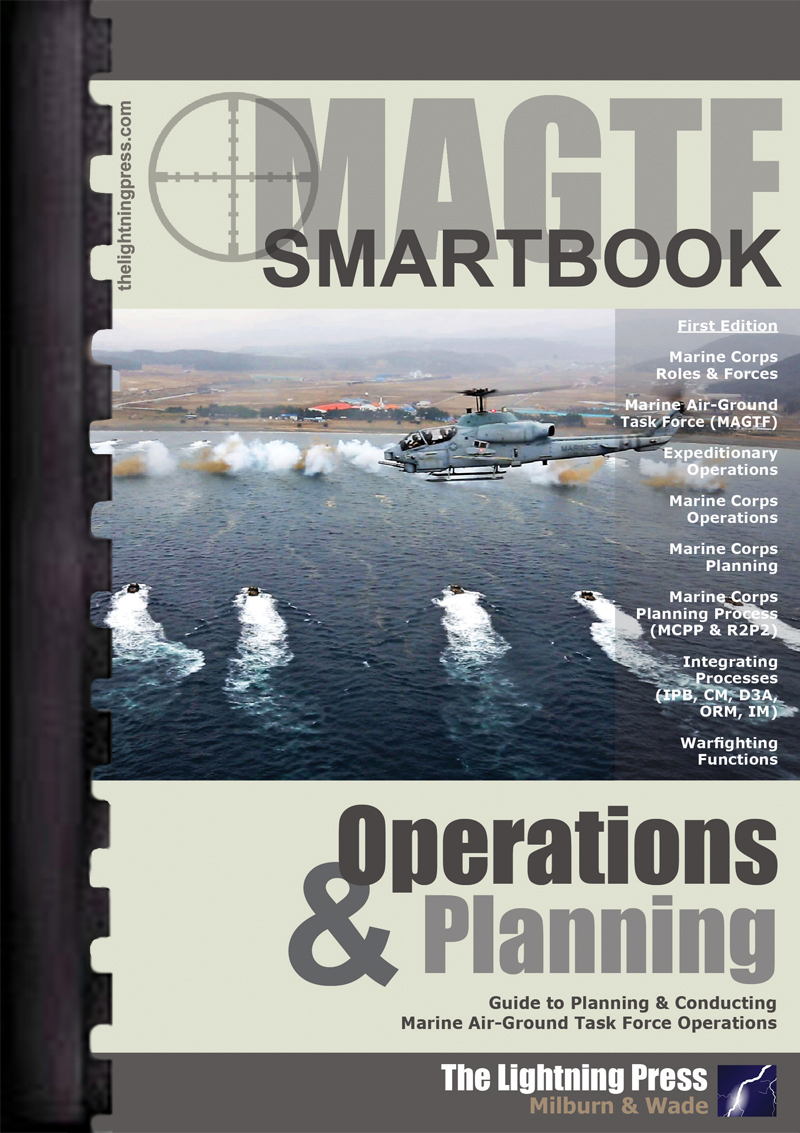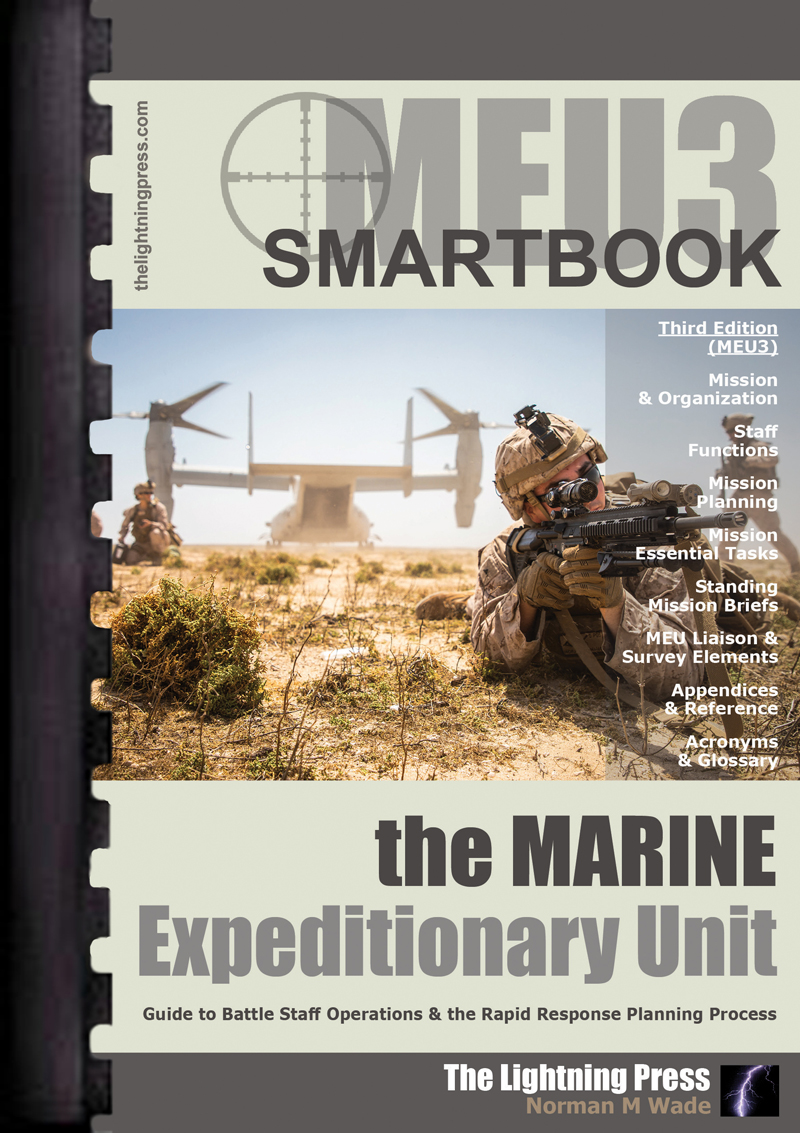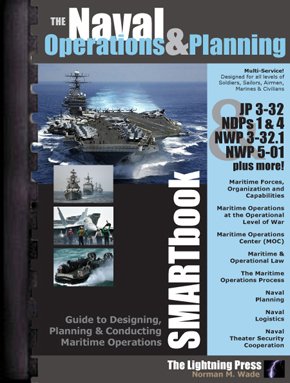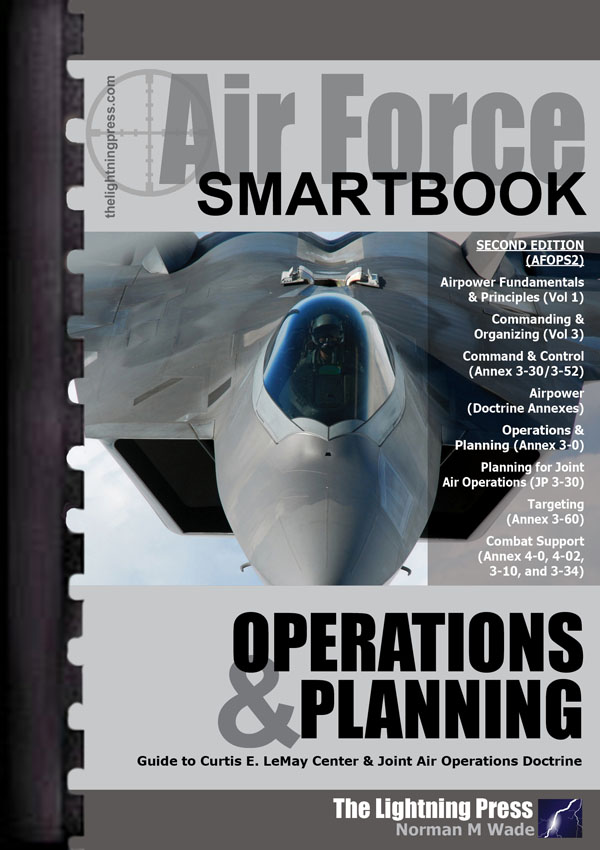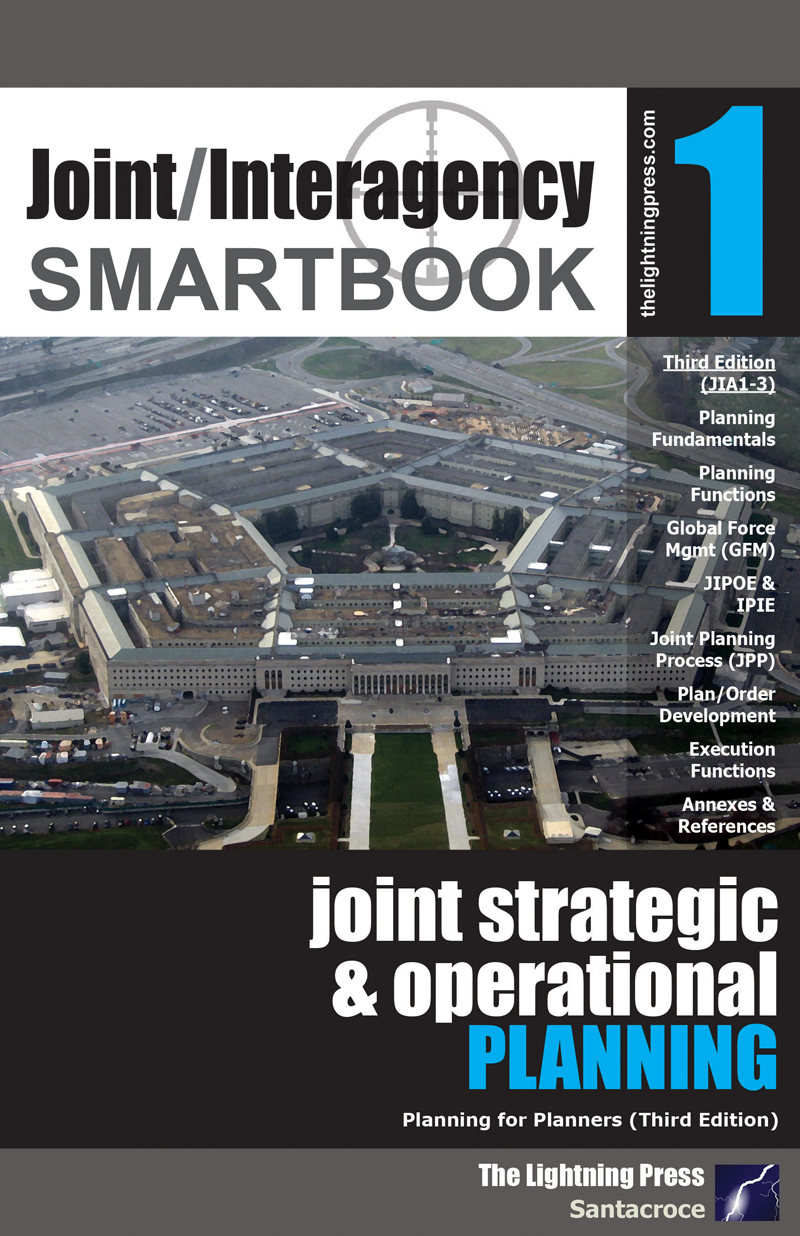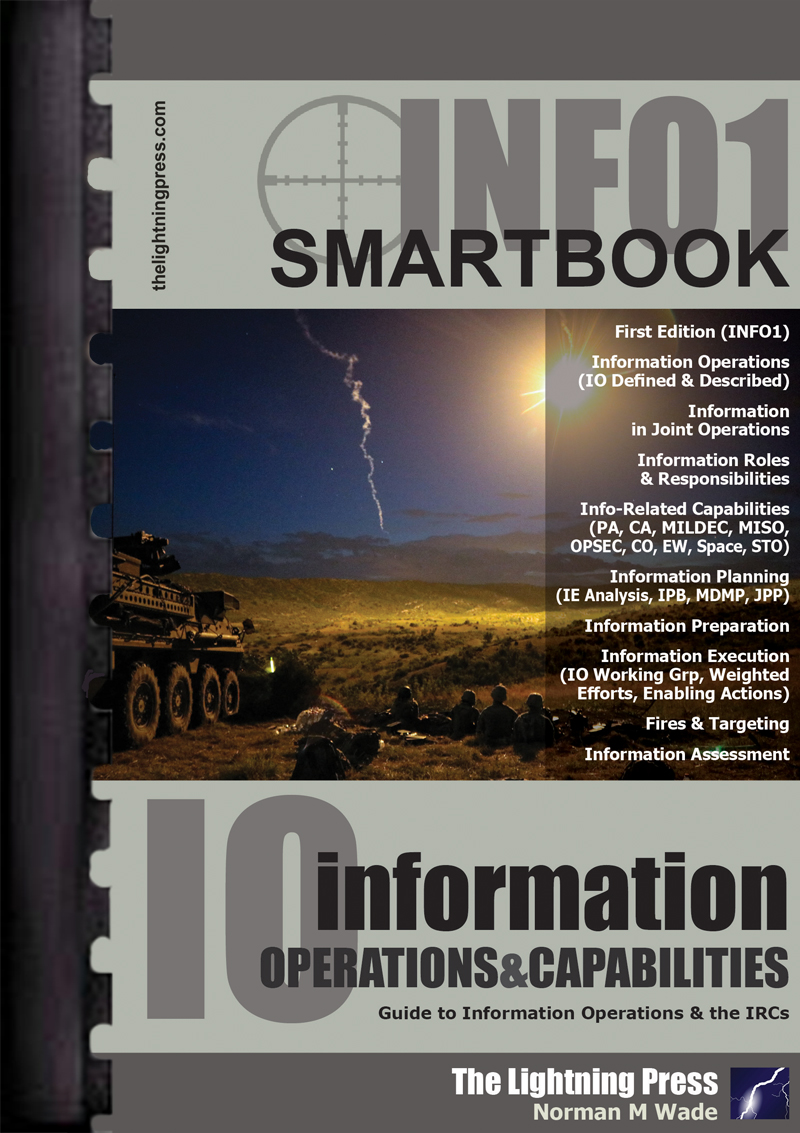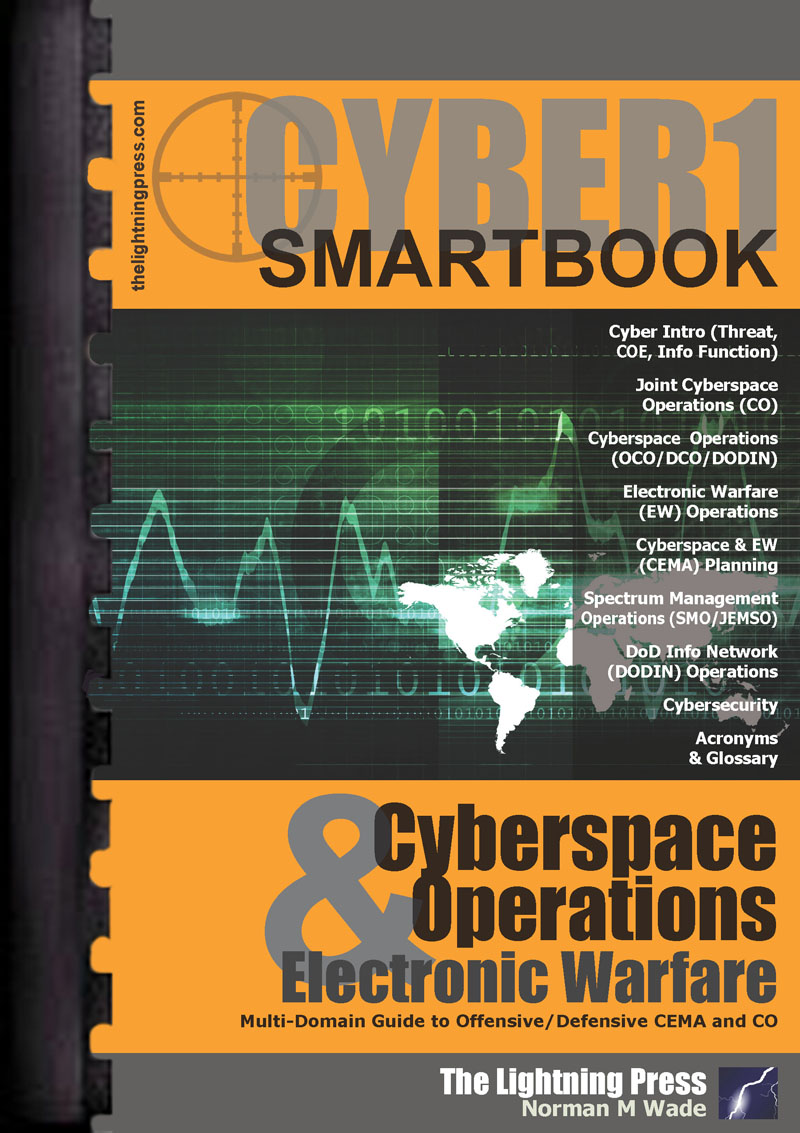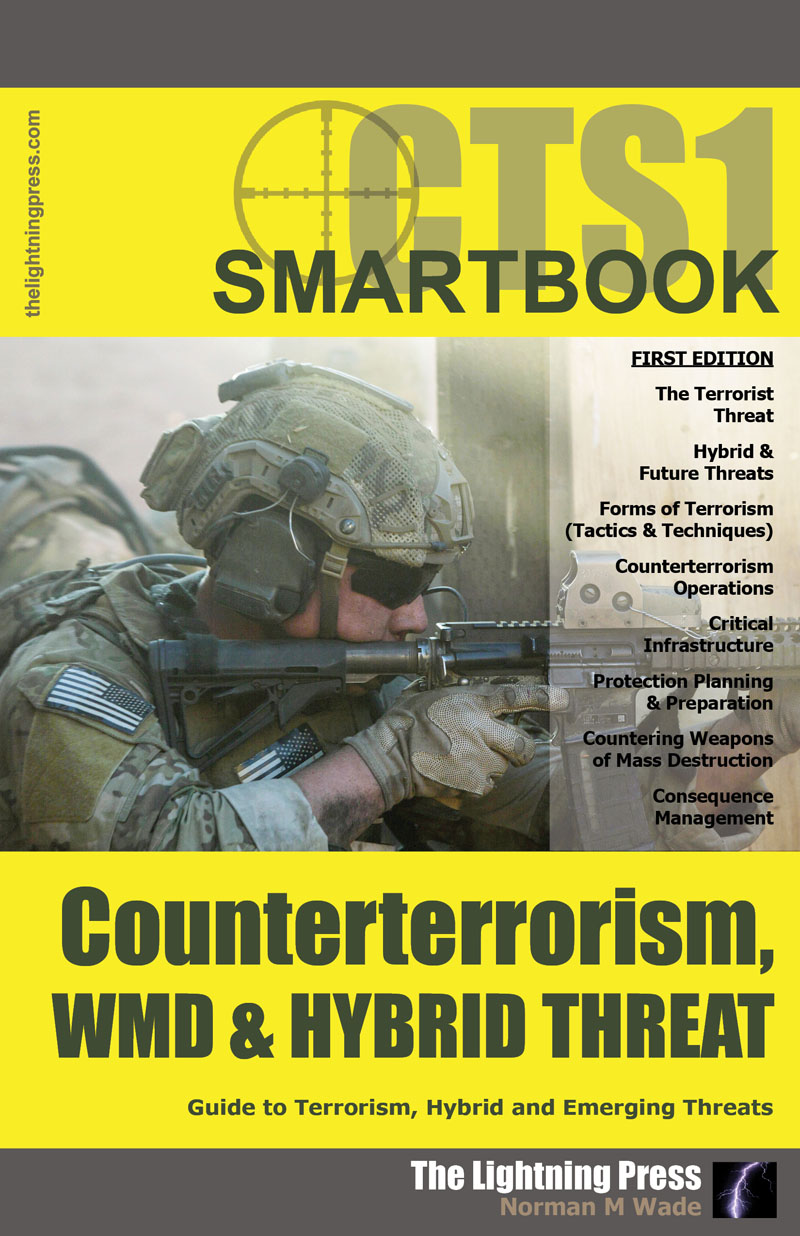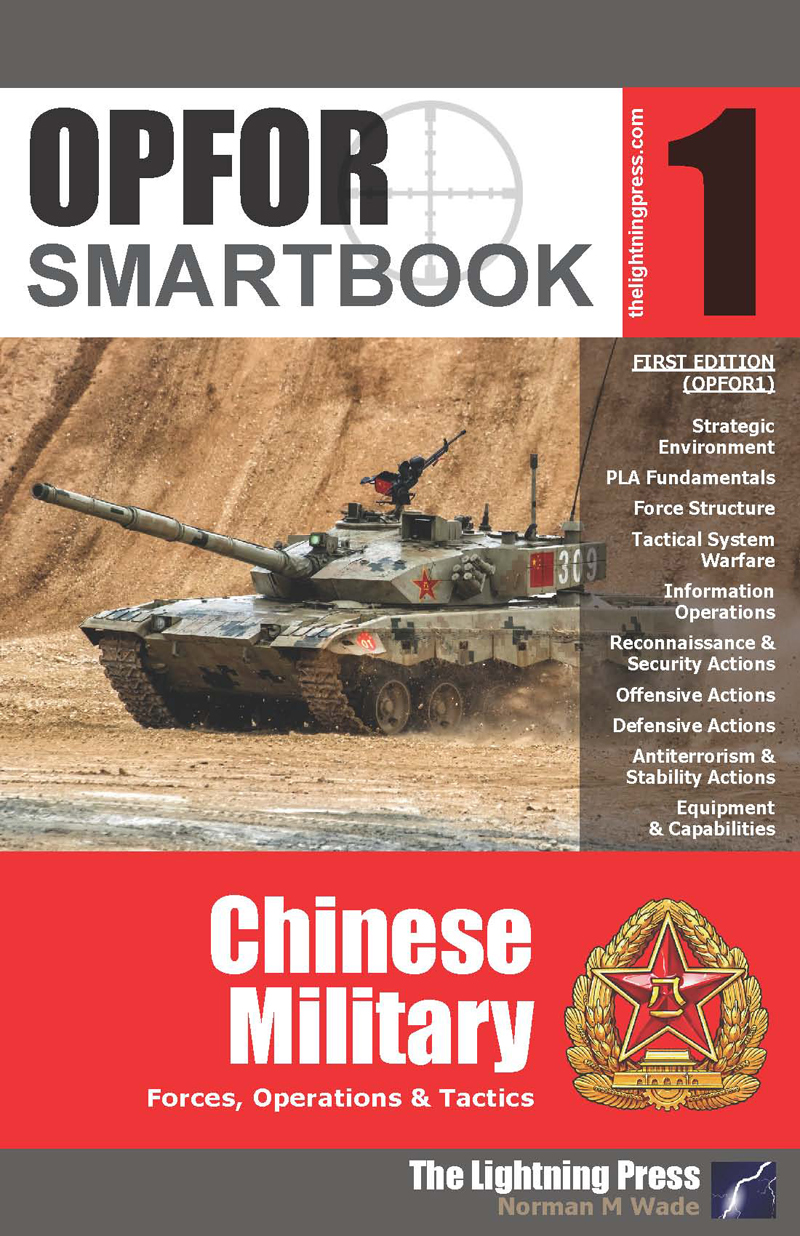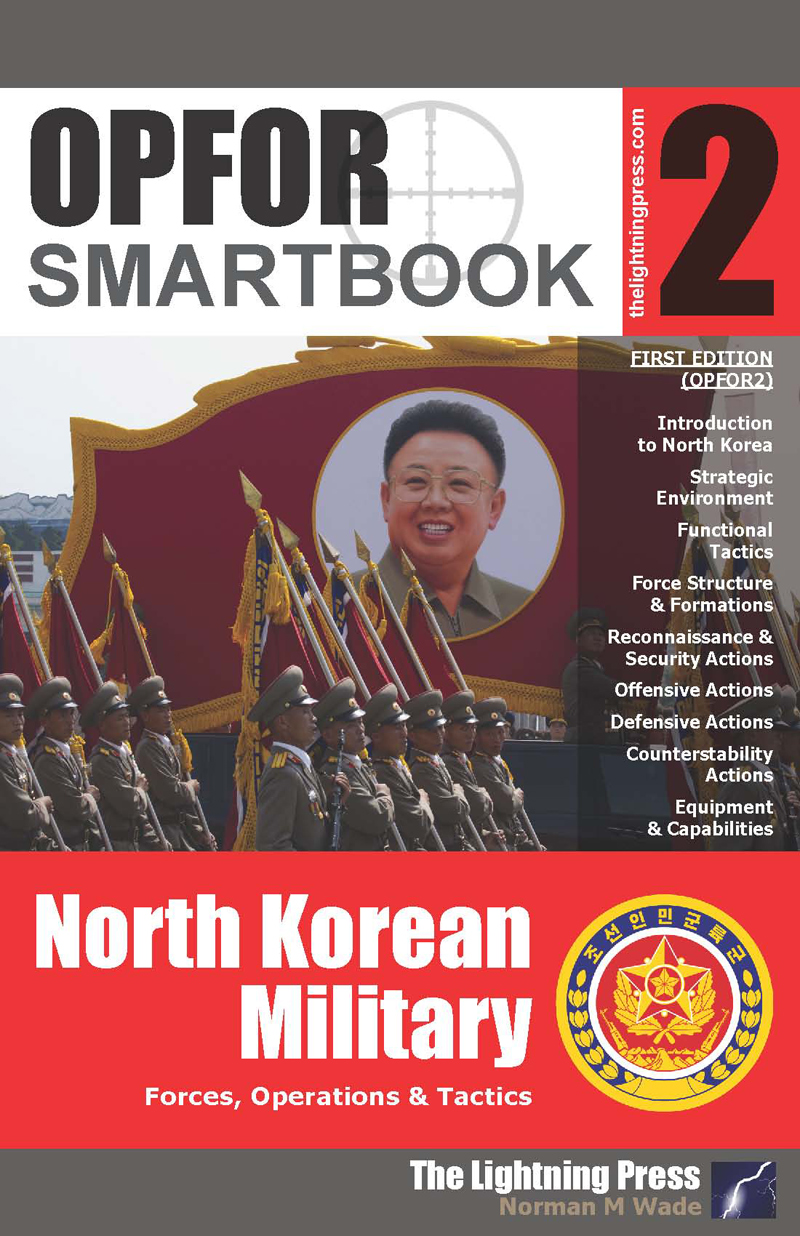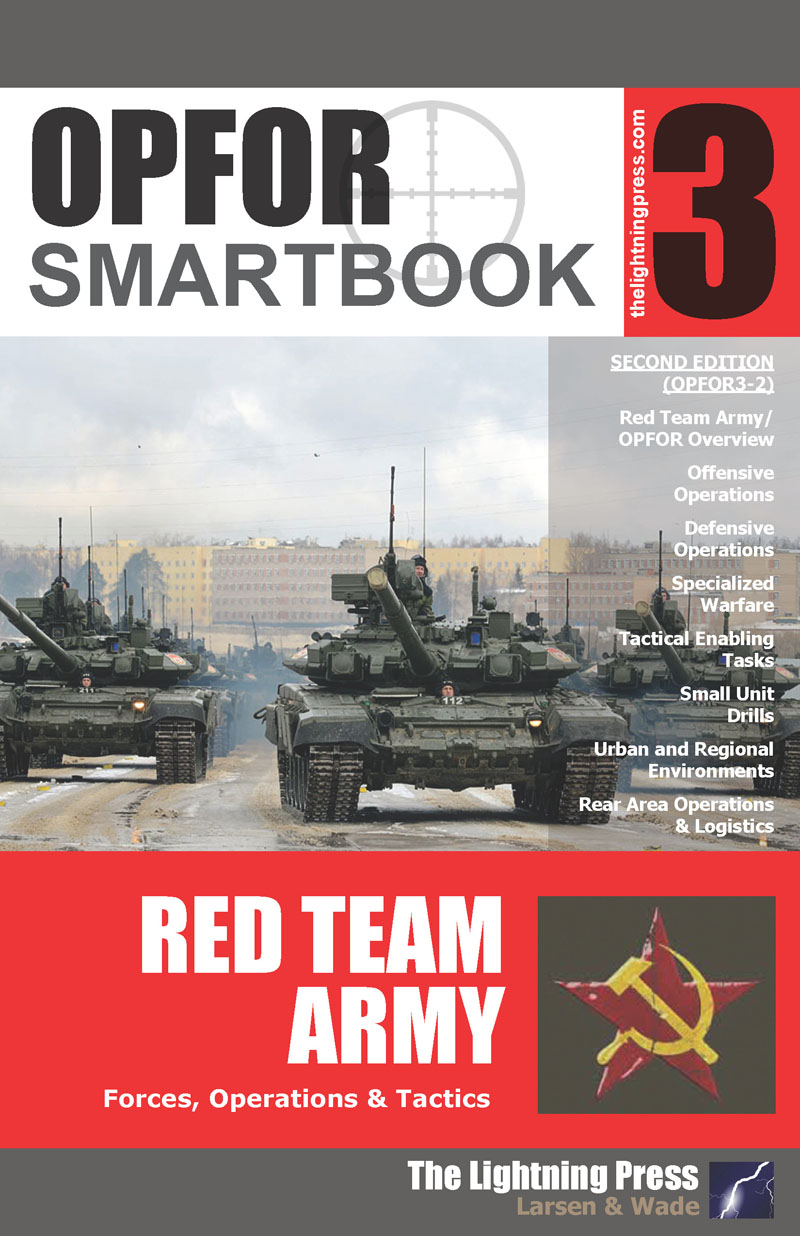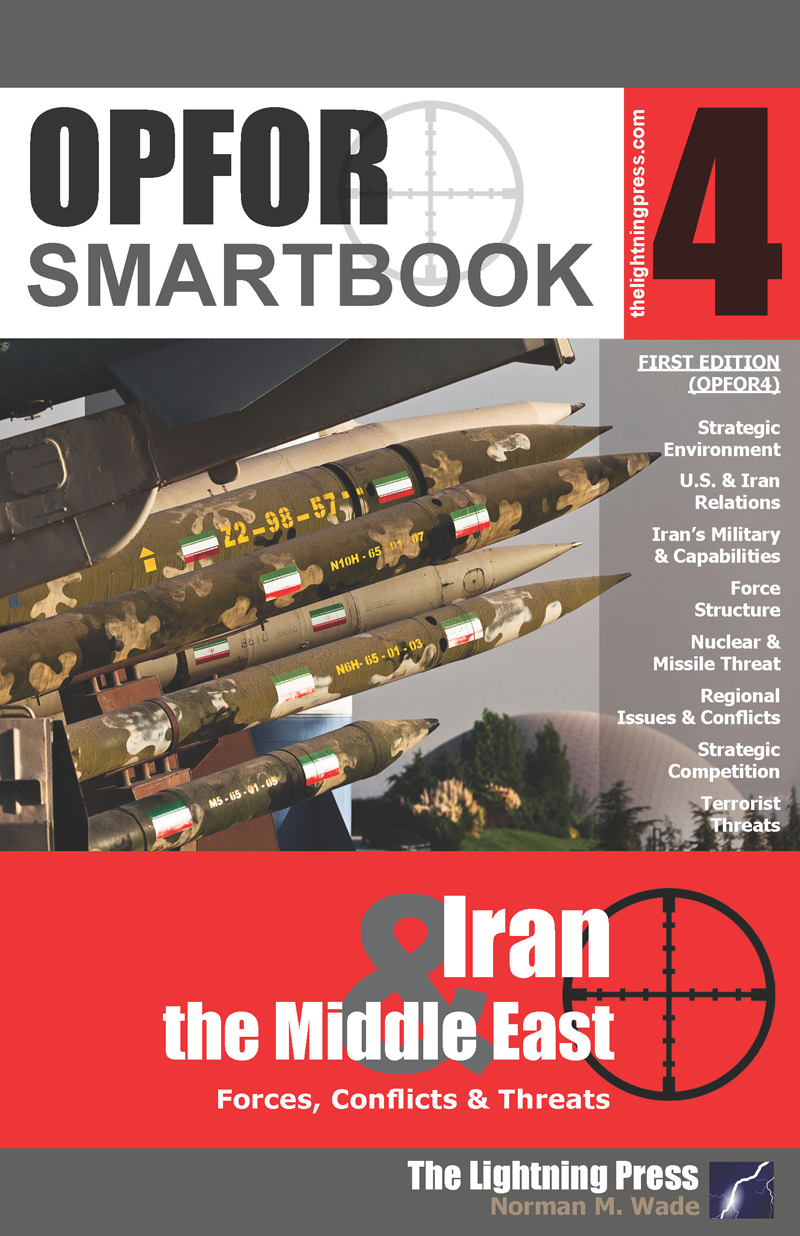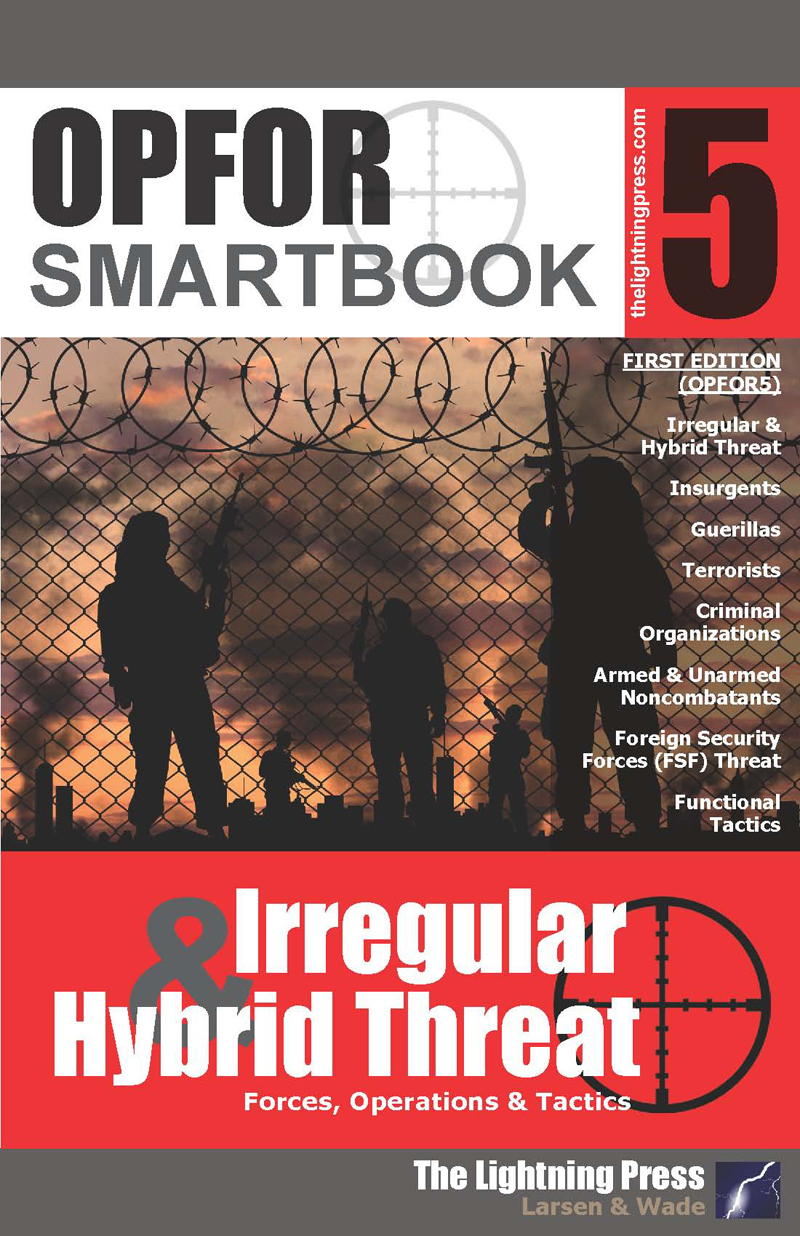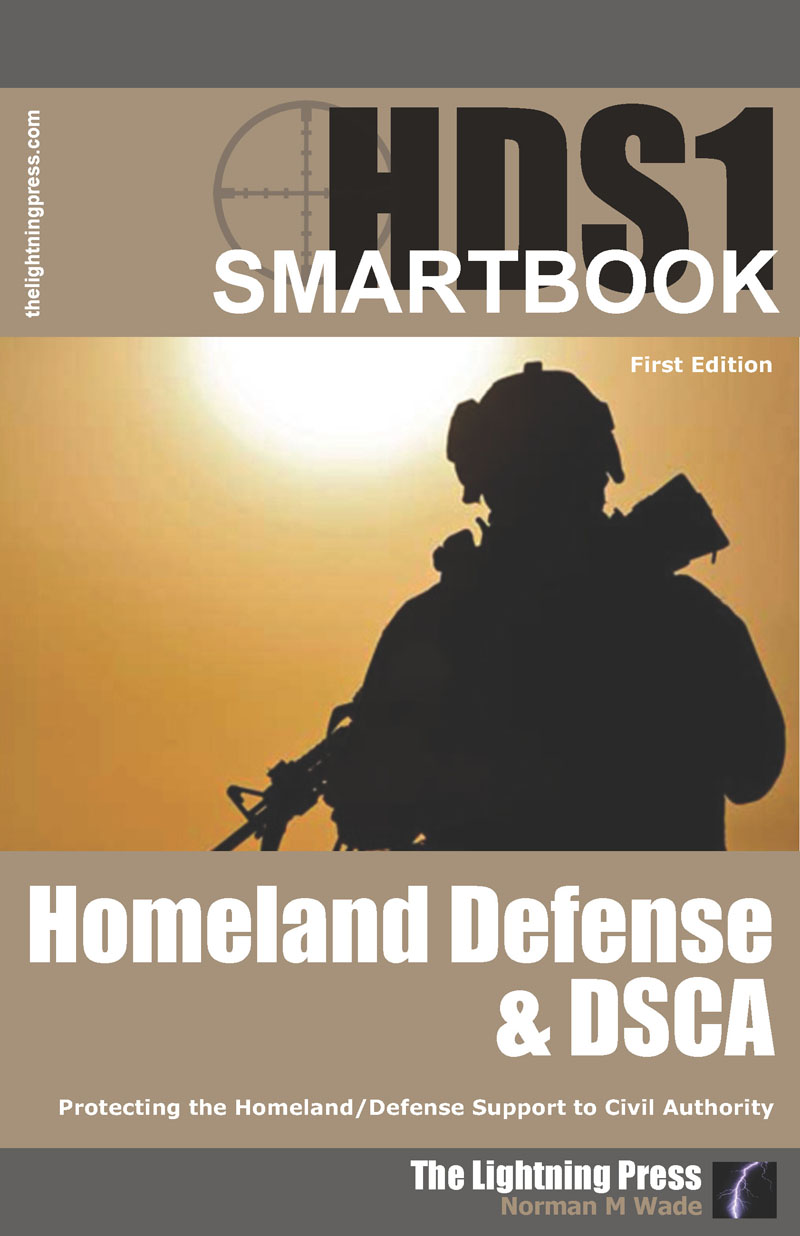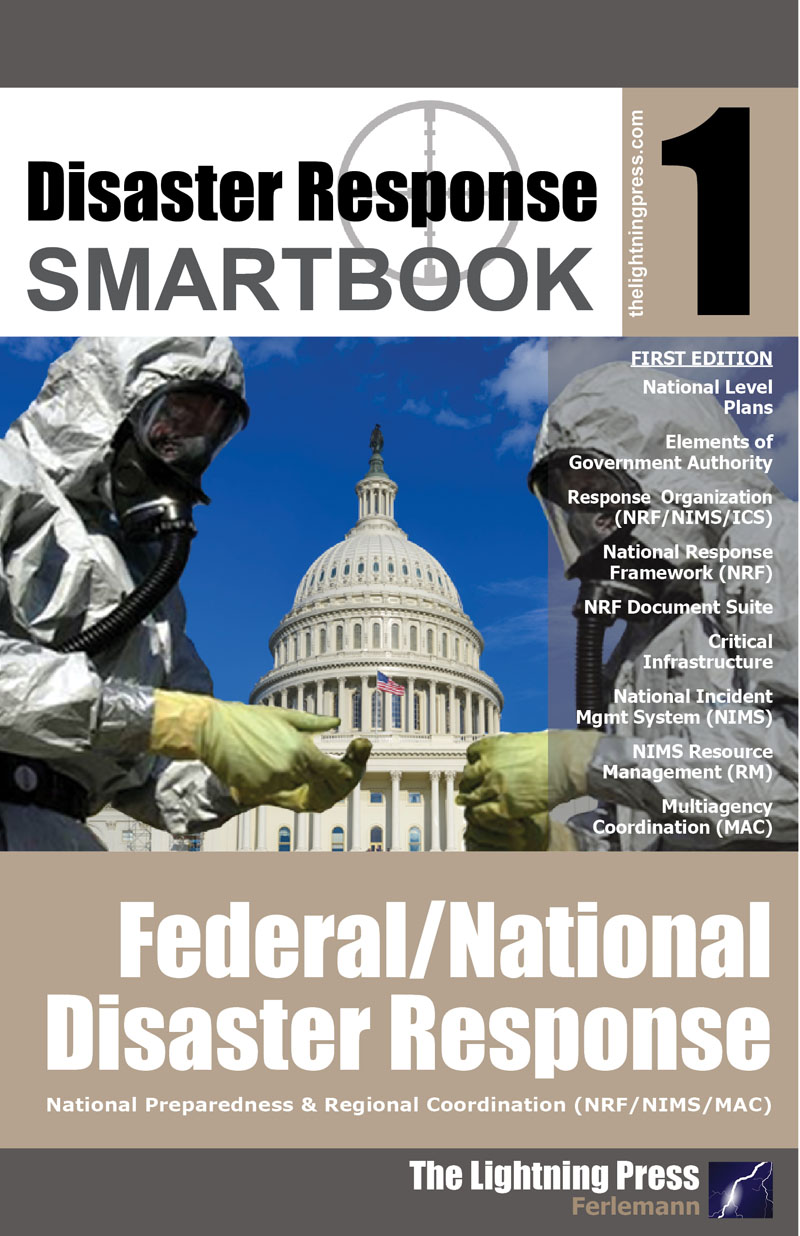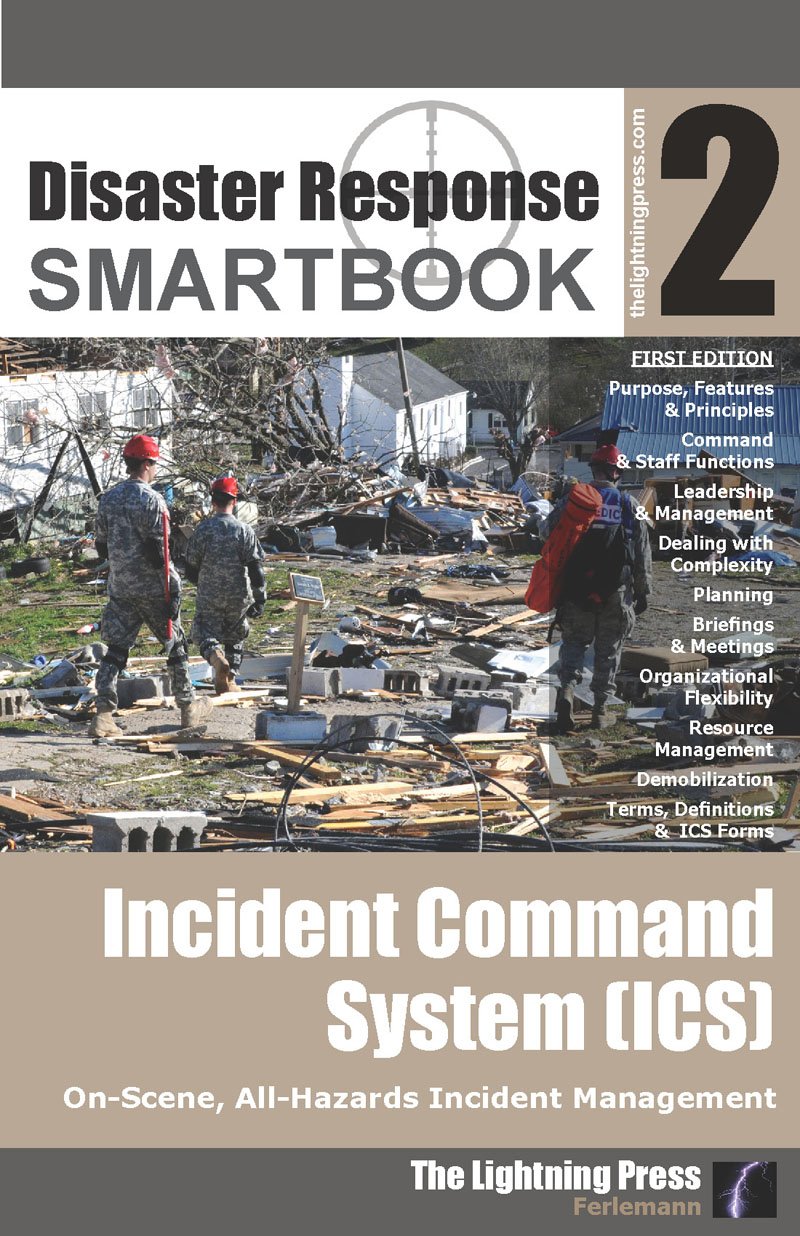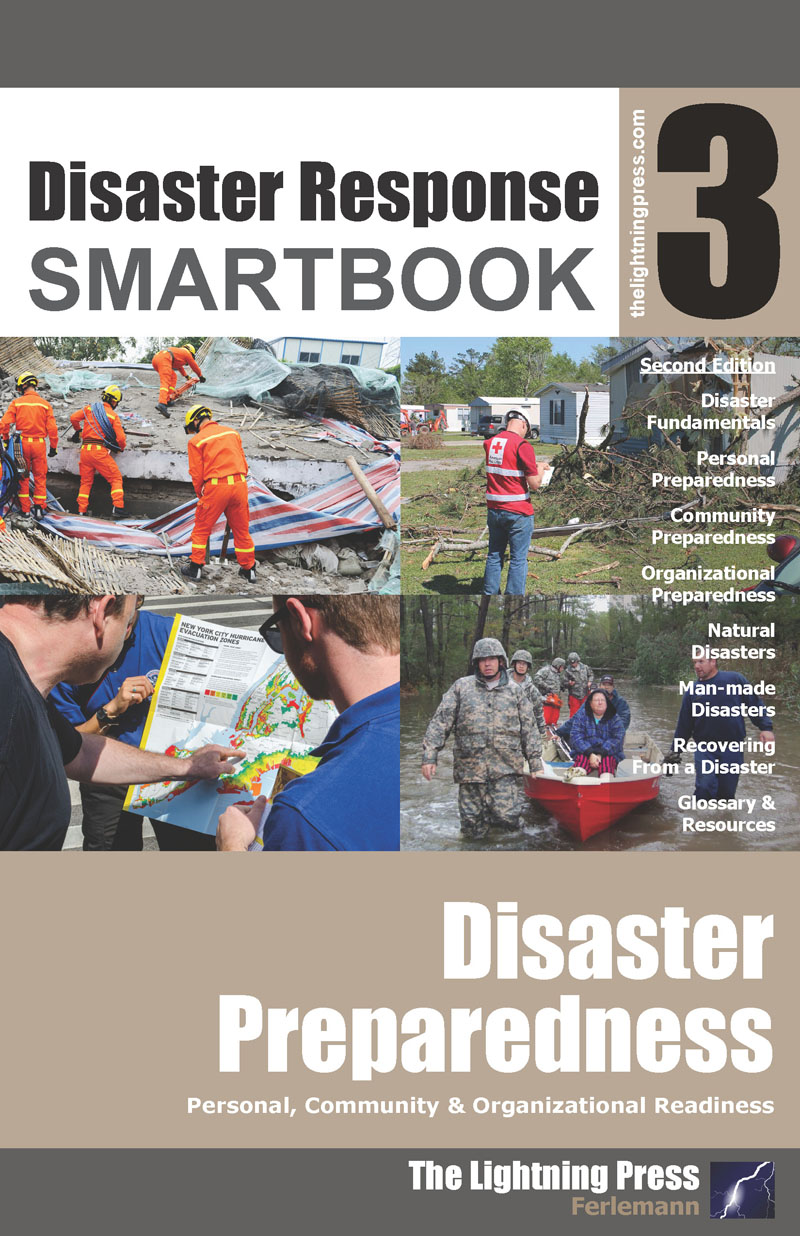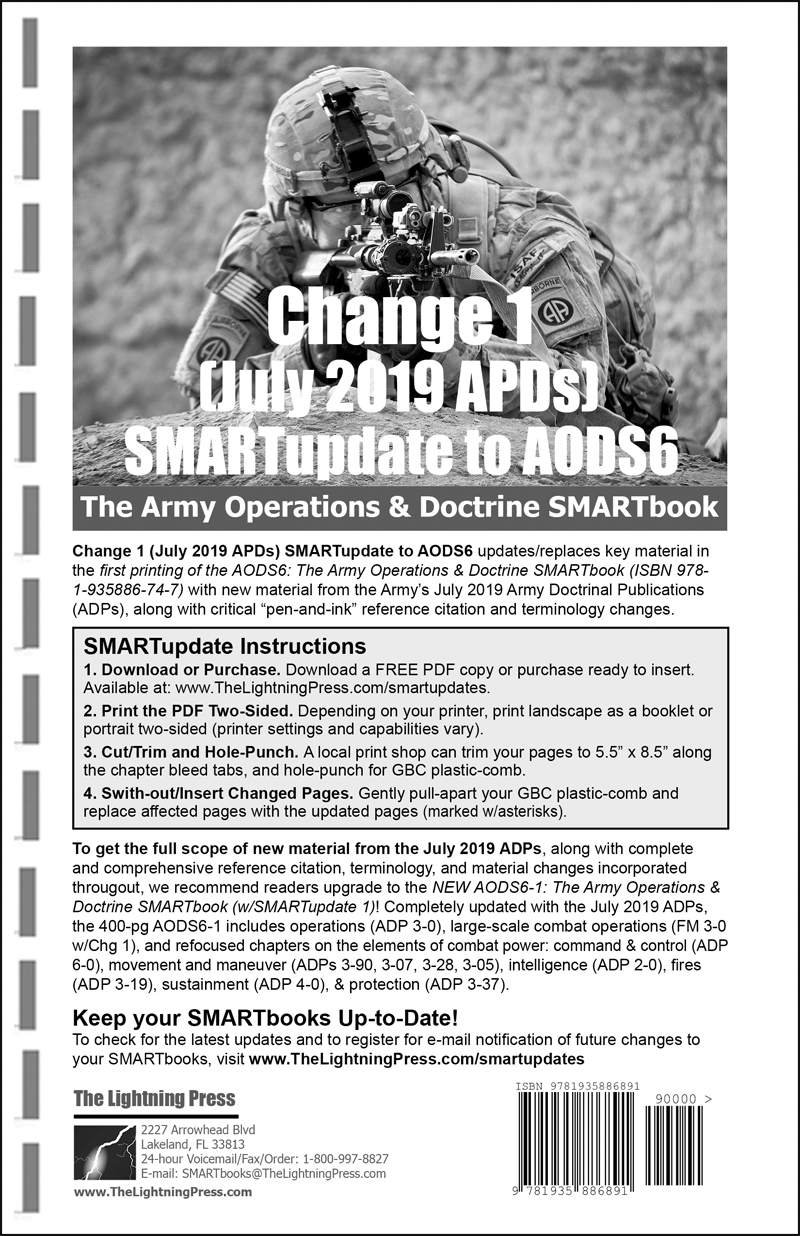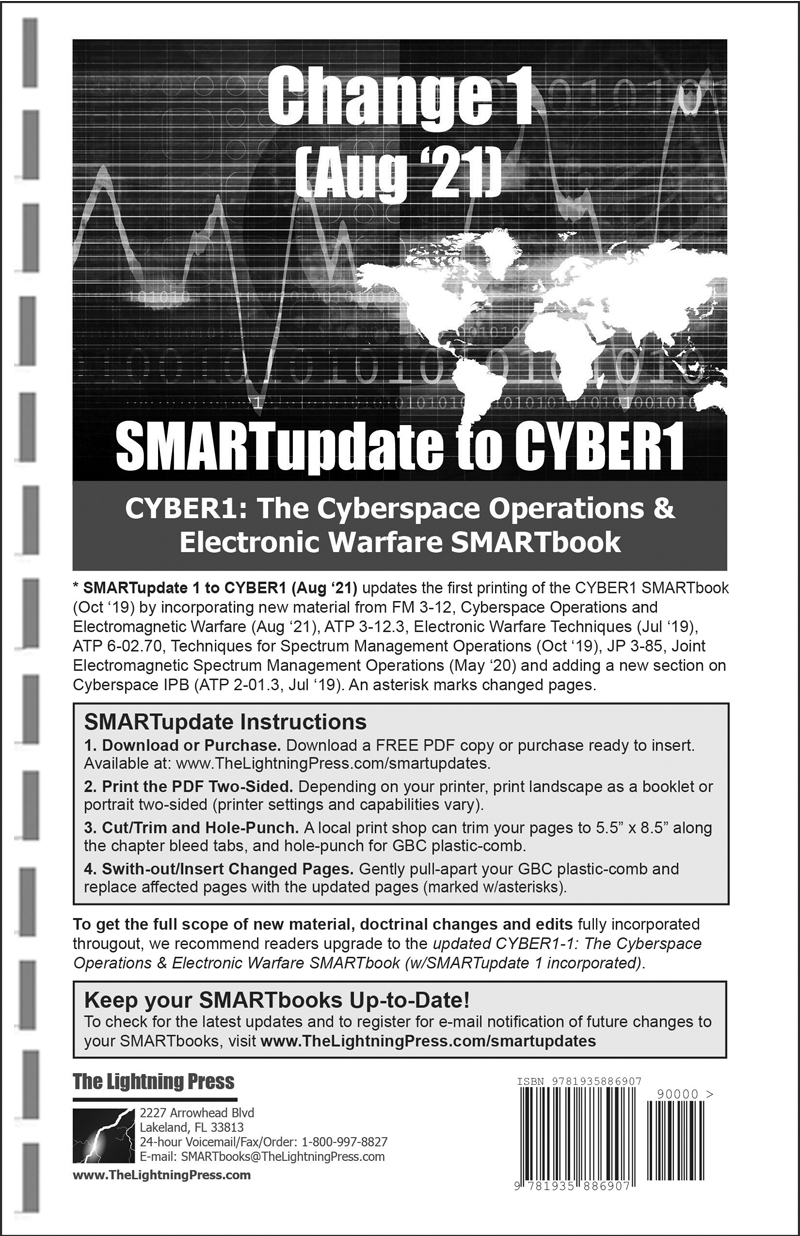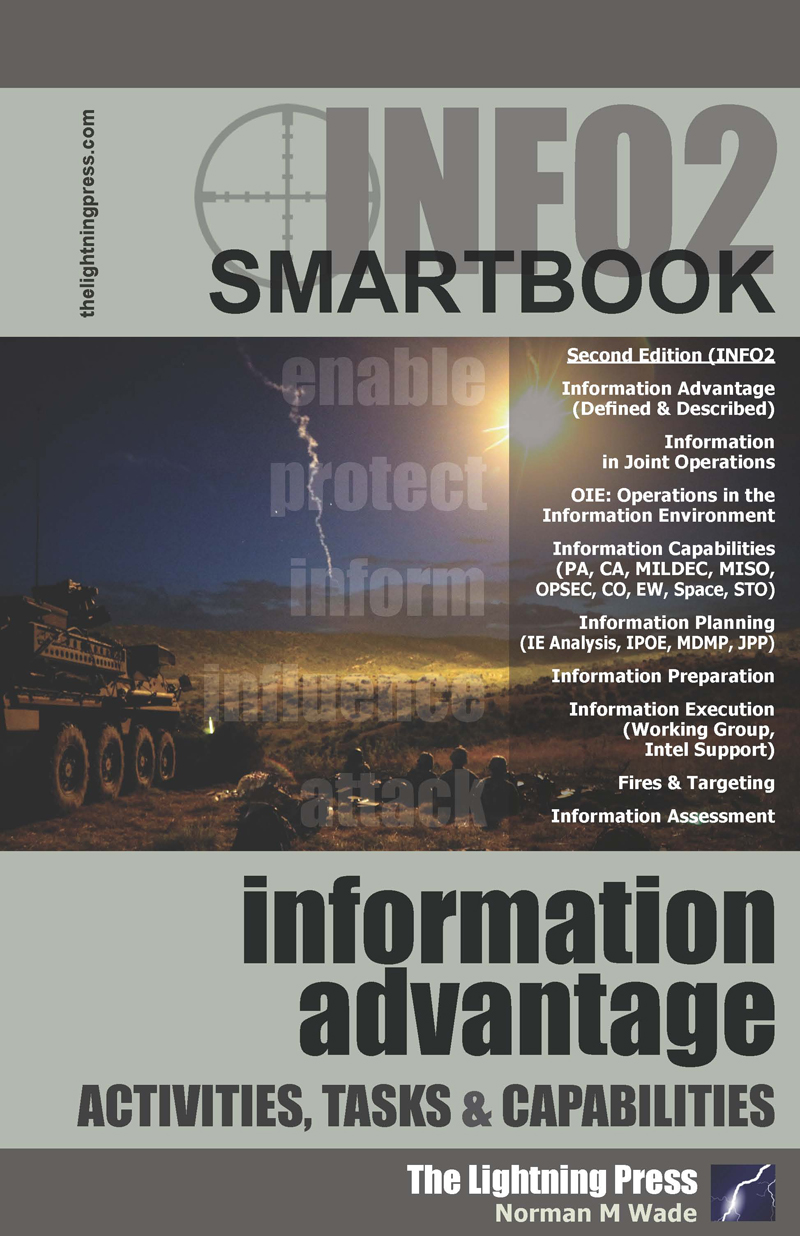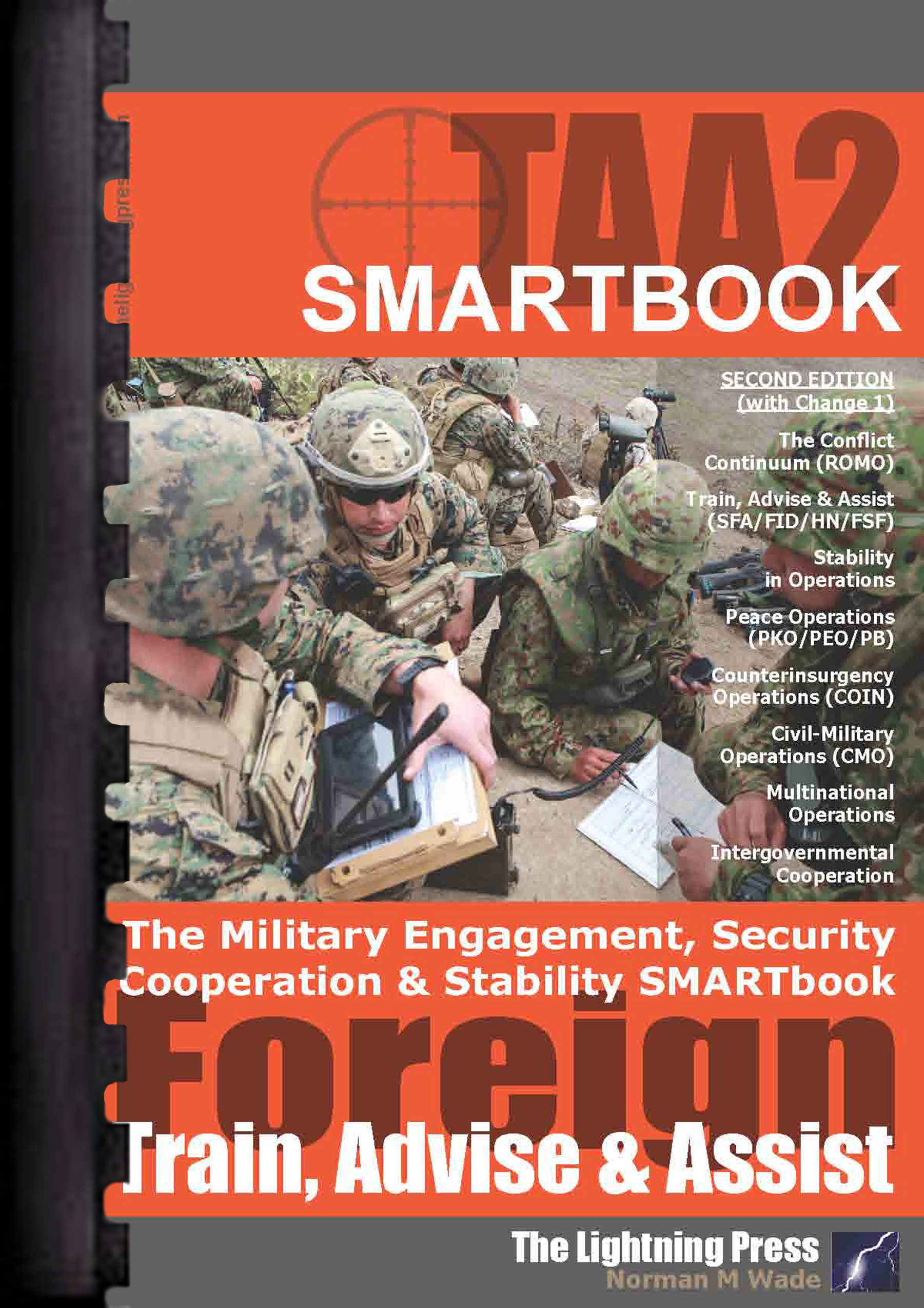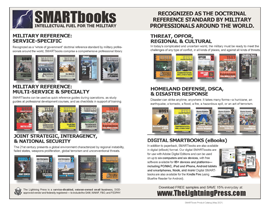The ''WARFIGHTING'' SUPERset (7 books)
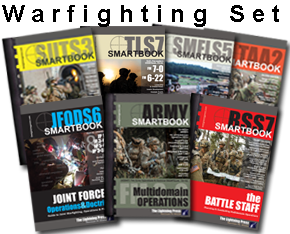

UPGRADE / CONVERT this set to premium GBC Plastic-Comb binding!
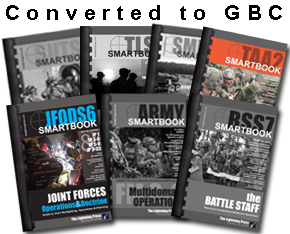
JFODS6: The Joint Forces Operations & Doctrine SMARTbook, 6th Ed.
ISBN-10 :1-935886-96-7
Release Date :Dec 11th, 2023
Binding Type:Perfect Bind
Print Inside Pages:Black and White
Trim Size:5.5'' x 8.5''
Total Pages:368
UPGRADE / CONVERT this book to premium GBC Plastic-Comb binding!
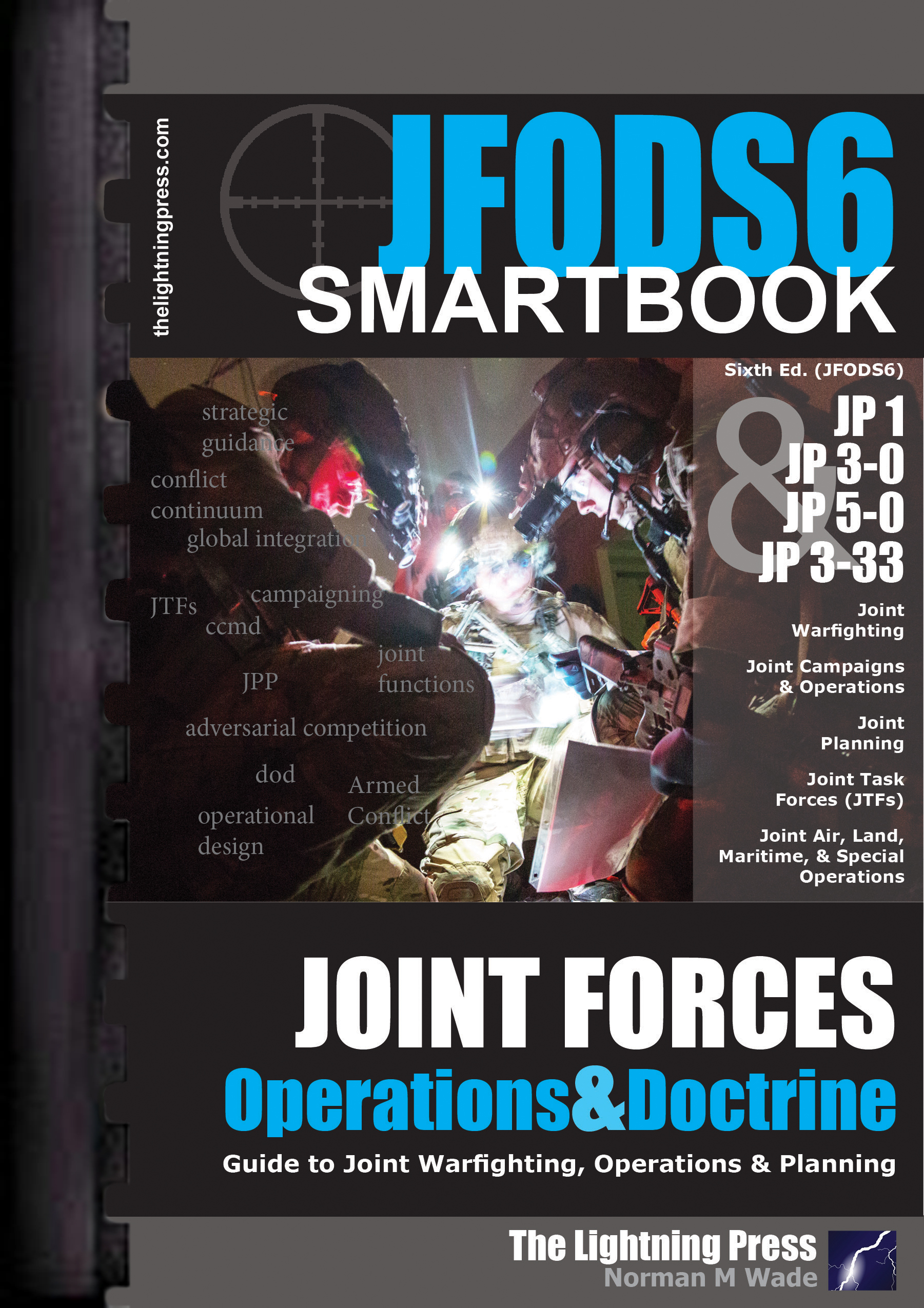
Guide to Joint Warfighting, Operations & Planning
JFODS6 is the sixth revised edition of The Joint Forces Operations & Doctrine SMARTbook. JFODS6 is completely updated for 2023 with new/updated material from the latest editions of JP 3-0 Joint Campaigns and Operations (Jun ‘22), JP 5-0 Joint Planning (Dec ‘20), JP 3-33 Joint Force Headquarters (Jun ‘22), and JP 1 Volumes I and II Joint Warfighting and the Joint Force (Jun ‘20), Additional topics and references include Joint Air, Land, Maritime and Special Operations (JPs 3-30, 3-31, 3-32 & 3-05).
The ultimate purpose of the Armed Forces of the United States is to defend the homeland and win the nation’s wars. The four strategic uses of the military instrument of national power - assurance; both forms of coercion, deterrence and compellence; and forcible action - are implemented through campaigns, operations, and activities that vary in purpose, scale, risk, and intensity, and occur across a competition continuum.
The competition continuum describes a world of enduring competition conducted through a mixture of cooperation, competition, and armed conflict. Competition is a fundamental aspect of international relations; as state and non-state actors seek to protect and advance their interests in pursuit of influence, advantage, and leverage, they continually compete over incompatible aims. Armed conflict occurs when a state or non-state actor uses lethal force as the primary means to satisfy its interests. Armed conflict varies in intensity and ranges from crisis response and limited contingency operations to large-scale combat operations.
The capability of the Armed Forces of the United States to operate as a cohesive joint force is a key advantage in any operational environment. Integrating Service components’ forces under a single joint force commander (JFC) maximizes the effectiveness and efficiency of the joint force. The joint force conducts campaigns and operations in a complex, volatile, security environment characterized by contested norms and persistent disorder. National security threats are transregional, all-domain, and multifunctional.
Joint planning is the deliberate process of determining how (the ways) to use military capabilities (the means) in time and space to achieve objectives (the ends) while considering the associated risks. Joint planning ties the military instrument of national power to the achievement of national security objectives and transforms national strategic objectives into operational design/approaches, lines of operation, and operational objectives, which in turn are carried out through tactical actions.
A joint task force (JTF) is the most common command and control option for conducting joint operations. A JTF may be established when the scope, complexity, or other factors of the operation require capabilities of Services from at least two MILDEPs operating under a single JFC. Commanders must integrate the capabilities and synchronize the operations of air, land, maritime, space, special operations, and cyberspace forces to defeat peer enemies.




